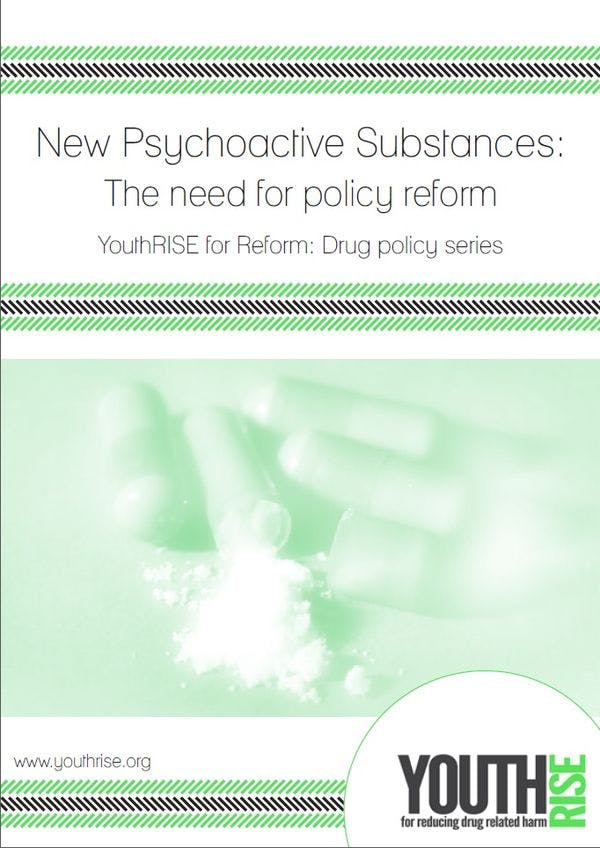Nuevas sustancias psicoactivas: se necesita una reforma de las políticas
Youth RISE analiza los retos que plantean los ‘euforizantes legales’ e identifica importantes recomendaciones sobre cómo reducir los daños a los que se enfrentan los y las jóvenes que los consumen. Más información, en inglés, está disponible abajo.
__________________________________________________________________________
Youth RISE has launched "Youth RISE for Reform: Drug Policy Series" in order to contribute to the growing discourse around alternatives to current approaches in drug policy. Through this series we hope to add a unique perspective to the debate by focussing on young people and how the need for reform is so important to such an under-represented yet much talked about constituency in policy discussions.
The last five years have seen some very significant changes in the international drug markets with a rapid growth in the consumption of “new psychoactive substances” (NPS) by young people in many parts of the world. The emergence of NPS (referring to a new substance that has not yet been scheduled under one of the international drug conventions) has lead to an extraordinary diversity of substances on the market available to new generations of users and raises some fundamental questions about the current policy of drug prohibition.
According to the European Monitoring Centre for Drugs and Drug Addiction1 , 24 new NPS were identified in 2009 and 41 in 2010, with over 150 substances currently identified globally. As new substances emerge in the international market and are scheduled (a category of drugs not considered legitimate for medical use), new lesser known substances continue to be created at an alarming pace bypassing the law. The composition of these NPS often lack consistency (in terms of what the substance is actually comprised of) which has considerably increased the potential harms for users whilst also making it more difficult for law enforcement authorities to control the market2 . In a recent study conducted by Energy Control in Spain3, it was found that many of the NPS that were tested were mislabelled, with the same brand of drug testing positive for a diversity of unscheduled substances.
In this report, Youth RISE explores this issue and identifies important recommendations for how to reduce the harms faced by young people who use NPS, including “legal highs” and other unscheduled substances available both online and at local head shops (a shop specialising in drug paraphernalia). We first look at some of the policy responses that have arisen to deal with this relatively new phenomenon, how and why these responses have been unsuccessful and what barriers currently exist in creating more effective harm reduction interventions for young people. In addressing these failed policy responses, the report will then highlight Youth RISE’s recommendations for creating a more effective approach to addressing the harms associated with the use of NPS.
Keep up-to-date with drug policy developments by subscribing to the IDPC Monthly Alert.
